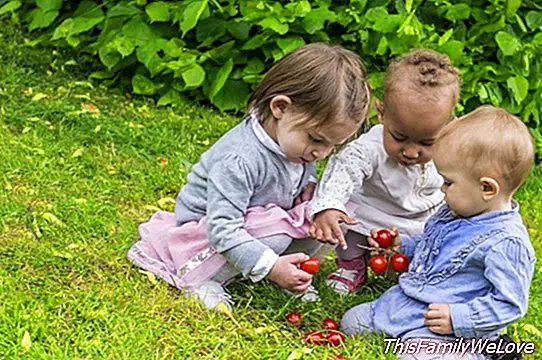This is all a child learns before age three

Before the age of three and up to five, a particularly wonderful period of feeling is produced to gain new knowledge. In this age, children are specially prepared forto develop their language, their psychomotor apparatus and their communicative capacity. This is how we can realize their potential and know how to help them develop it in a practical way.
Language: this is how they learn to speak
It is common to talk with mothers and hear stories of how their three-year-old children are reading on their own, but the truth is that Most children do not read until they are five years old. However, between three and five years of age is when the connections are created that will allow the child to understand how graphemes work and how they are translated into phonemes in a way that allows a fluid reading in the future. It has been proven since the 80s that there is a strong correlation between the ability of a child to distinguish phonemes and their reading ability.
The human brain lives a critical period in terms of language in these years. One way to capitalize on this critical period is reading to our children and encouraging them tell us invented stories. It is very common to hear new words and start using them in a daily and correct way. Reading at this age is a great ally. It is also useful to try not only read stories and fables to our children, but expand the literary vocabulary and genres a bit with texts about History, news and even instruction manuals.
Another way to take advantage of this critical period is by asking our children what certain words mean and explain them if they do not know how to answer. This is an interesting activity since sometimes they solve concepts that we thought they did not understand and other times they use inventiveness with funny and elaborate answers.
You can always do a list of "words of the week" and try to make use of them during those days. They can be accompanied with an explanatory drawing and a didactic game can be made. For example: for every ten times they correctly use this word they gain a reading point. When you reach ten reading points, you get a new book. The possibilities are unlimited!
Exposing our children to the alphabet or to monosyllabic or disyllabic words in a verbal and written way, we get them to be associating phonemes with writing. Our children would be making use of at least three language areas: the visuals, the area that associates symbols and sounds and the area of linguistic comprehension.
Motor skills: this is what they learn before they are 3 years old
During these years in which a good balance is more than achieved, our children begin to climb, jump, and perform physically more complex activities. Executive functions are developed to control memory, rhythm and sequencing, all key to complex physical activities.
It is in these ages that you learn to master a bicycle or swim to perfection. Repetition is important in the development of motor skills because they allow a stronger connection between neuronal stimuli and muscle movements. You can see very quickly how advances in physical sports are very fast. It also happens with fine psychomotricity. The drawings become increasingly complex, clear and defined
To take advantage of this moment of motor learning, a special emphasis can be placed on dedicating time to physical play and painting and drawing.
Communication: talk about your intentions and feelings
Very associated with language, however, is a different field. It is at this stage that our children learn to listen better and respond more accurately and correctly when they are spoken to. Not only is reflected in the length and complexity of their sentences, but also in the sequence with which they relate events. In addition, they begin to speak out loud of their feelings and intentions, something that until now only happened in an abstract way in their minds.
Emotions: they develop from the game
Socialization begins to play a more important role in this stage. Before age three there is no real difference between children who are exposed to other children and those who are not. But at three the whole game starts. Interactions with parents, caregivers and other children begin to be a great source of stimulation. The brain is tuned to strengthen relationships, norms and social expressions.
The social and emotional environment in which a child is found is fundamental to the formation of his brain and personality. Between three and five years the cerebral cortex develops in such a way that it allows our children to see that the world is not composed of a single opinion, theirs.At four, a child is fully aware that there is a possibility that a partner of his does not want to play the same game that he wants and that there are conflicts of interest because the world is no longer one-sided and one-dimensional.
These learnings about the world, the emotions of others and their communication develop largely through the game. It is during these ages and these periods of play that children are exposed to their first situations of social conflict in which, by a pattern of attempts and mistakes, cooperation and negotiation, they find a way to achieve their goals, share, Form and make use of your tolerance for frustration and wait your turn.
Maite Balda Aspiazu. Psychologist and Master in Cognitive Neurosciences




